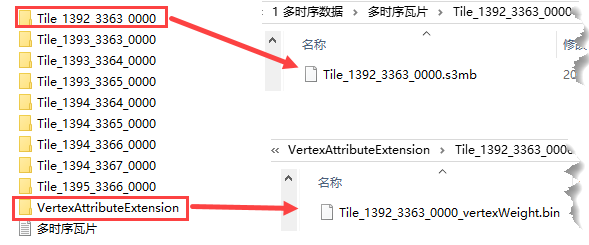Point Set Generating Temporal Model Tiles
Instructions for use
The Generate Time-Series Model Tiles from Point Dataset function can be used to convert a point dataset storing time-series information into S3M tile data, enabling multi-platform applications with dynamic effects such as river flooding. Each point in the dataset typically stores spatial coordinates (X/Y/Z) and multiple attribute values representing features at different times, such as water temperature at the same location at various moments.
Function Entry
- 3D Data tab-> 3D Tiles group-> Generate Tiles drop-down menu-> Point Set Generating Temporal Model Tiles
Operation steps
- In the Workspace Manager, open the source data for generating time-series model tiles using the Import Data function.
- On the 3D Data tab, in the 3D Tiles group, click the Generate Time-Series Model Tiles from Point Dataset button in the Generate Tiles dropdown menu. The "Generate Time-Series Model Tiles from Point Dataset" dialog box will appear.
- Set the point dataset:
- Datasource: Select the datasource containing the point dataset with time-series information from the dropdown menu.
- Dataset: Select the point dataset with multi-temporal feature attributes in the attribute table from the dropdown menu.
- Set the clipping dataset:
- Datasource: Select the datasource containing the constraint surface dataset from the dropdown menu.
- Dataset: Select the constraint surface dataset from the dropdown menu. The constraint surface defines the range of the dynamic time-series effect and must overlap with the point dataset's extent. Its coordinate system should match that of the point dataset.
- Set parameters:
- Thread Count: Set the number of threads for generating time-series model tiles from the point dataset.
- Tile Name: Enter any string as the name of the resulting S3M tiles.
- Storage Path: Set the target path for storing the resulting tiles.
- Time-Series Field: Click the Settings button. In the "Feature Settings" panel, configure elements and dimensions based on the data, and select the corresponding attribute fields (numeric type, e.g., double) that represent multi-temporal features.
- After completing the settings, click OK to execute the tile generation. The resulting time-series model tiles are shown in the image below. The *.s3mb file contains the tile data information, while the *.bin files in the VertexAttributeExtension folder store the time-series feature information.




